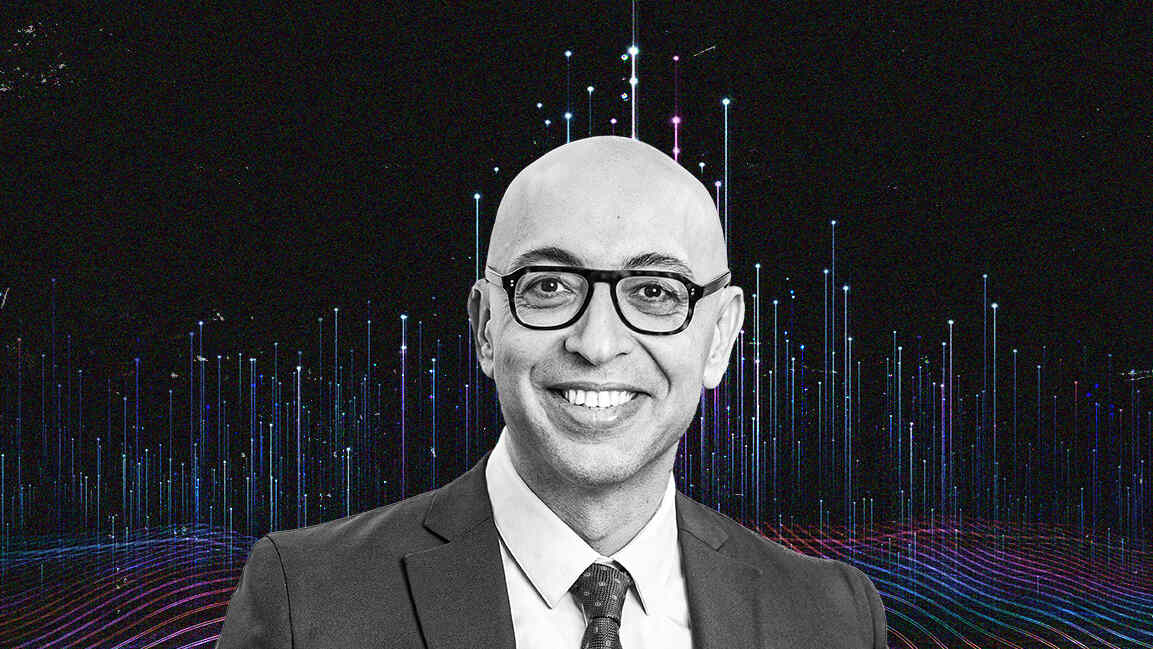- | 9:00 am
Qualcomm wants to co-develop and co-innovate in the Middle East — and it’s already working
Sharing Qualcomm's ambitious vision for the future of technology in the Middle East, Wassim Chourbaji says it engages “very constructively” with governments through policy, partnerships, and co-innovation

AI adoption redefines the Middle East’s dynamic economic and technological landscape, particularly Saudi Arabia and the UAE. With their ambitious national strategies, massive funding support, and willingness to attract top companies and talent, these countries and other regional players are positioning themselves as formidable competitors in the AI race.
For example, Saudi Arabia has set aside $100 billion for AI and technology investments, and its annual tech event, LEAP, led to investments of over $14 billion, primarily in AI, this year.
Many in the technology industry have backed these plans, including Qualcomm Technologies, a leading developer of advanced wireless technologies, advanced computing, and AI.
“The Middle East wants to be a powerhouse in AI,” says Wassim Chourbaji, President, Qualcomm MEA & SVP Government Affairs EMEA. “So, when we look at our technology assets, wireless connectivity, particular chips that are high performing, and very sustainable, combined with AI, there is a strong room for partnership in the region.”
Sharing Qualcomm’s ambitious vision for the future of technology in the Middle East, encompassing everything from 5G expansion to embracing the hybrid AI future, Chourbaji says it engages “very constructively” with governments through policy, partnerships, and co-innovation. “Because ultimately the region wants economic growth, but also exclusiveness. It’s a positive agenda.”
AI-ENABLED INDUSTRIAL SMARTPHONES
Apart from its push into PC chips and growing automotive business, which forms part of its diversification away from just mobile chipsets, Qualcomm has also been building its industrial solutions, with AI a key part of its strategy.
In February, at LEAP 2025, Qualcomm and Aramco Digital, Aramco’s digital and technology subsidiary, announced the world’s first AI-enabled industrial 5G smartphones with native support for the 450MHz spectrum.
Support for the 450 MHz spectrum allows 5G IoT devices, edge computing, and end-users to connect to a new generation of AI-enabled industrial applications, initially focusing on advanced industrial solutions for Aramco.
“A nationwide 5G industry doesn’t exist elsewhere, but they decided to do it in a specific airwave spectrum called 450 MHz. So they needed a partner where the chip would support 5G AI and 450 MHz, and we are that partner,” says Chourbaji. “The license was granted to Aramco, and now we’re working with them to enable the world’s first industrial hand-held.”
Elaborating on the AI-enabled industrial smartphones, he says it enhances operational safety and efficiency by utilizing on-device generative AI for advanced video security and surveillance, helping to provide real-time insights and predictive analytics. “Workers can look at equipment, retrieve information, and troubleshoot,” says Chourbaji. “It makes a lot of sense, especially the rapid incident responses when you have issues on site.”
Featuring autonomous AI drones with generative AI flight control, the solution provides swift and effective responses to on-site incidents. It also revolutionizes maintenance practices with hybrid AI technologies and edge cloud AI processing.
“It’s the full monitoring system on the site, using edge AI cameras to detect incidents and report maps. The combined solutions bring operational efficiency, reduce cost, and improve sustainability.”
Launching AI-enabled industrial smartphones at the Aramco site, which is highly secure and significant, was a proud moment, he says. In an environment where there is no access to the internet, these smartphones can enhance workers’ lives by improving efficiency. Additionally, they increase safety by allowing for the detection of failures and ensuring that workers are wearing their protective gear.
“Achieving that is outstanding. Many other countries and companies worldwide say, ‘I want the same.’ So that’s a very proud moment.”
Apart from Gen AI solutions for the industrial sector, Qualcomm introduced ALLaM PC, an AI PC branded with a national Large Language Model, ALLaM, in Saudi Arabia, ramping up its push in the new AI ecosystem.
“In Saudi Arabia, we announced two big things, moving to industry and consumer space… We are revolutionizing AI PCs with our Snapdragon chip within NPU with the new processor unit, 45 TOPS [trillions of operations per second].”
It runs on Snapdragon X Elite processors, which are powerful enough to run the ALLaM model locally on the device. This offers a responsive and private user experience, indicating that the company will benefit from the AI boom as the technology becomes more efficient.
“You run AI all the time. We quantized the ALLaM and put it on the device. It can work offline with no internet access. Out of the box, secure, private that will be deployed across government agencies. This is the first time you have ever seen a device designed in-house in the kingdom,” adds Chourbaji.
Earlier, Qualcomm also collaborated with UAE-based AI firm G42 to integrate its Cloud AI products into G42’s Core42, which has launched the AI Playground, a platform housed within its UAE data centers. The AI Playground leverages the Qualcomm Cloud AI family of accelerators and the Qualcomm AI Inference Suite for Cloud to provide developers and AI engineers unrestricted access to high-performance AI applications, agents, tools, and libraries.
“And now we’re working with e& in a number of areas like AI, industrial boxes, and AI PC. So, in both countries, companies want to be co-developers, co-innovators,” says Chourbaji, who has been at Qualcomm for two decades.
In the UAE, the Abu Dhabi National Oil Company (ADNOC) has partnered with telco e& to build a private 5G wireless network that spans 11,000 square kilometers. This will be the largest private 5G wireless network built in the energy industry.
“We’re enabling both to have the right technology assets. It’s like you have several models that could exist,” says Chourbaji, adding that they are different from the direct model Qualcomm built at Aramco.
The region has long been an importer of technology, and Qualcomm, he says, with these use cases, “is setting a global standard.” “A whole set of use cases and solutions around industrial IoT were developed in the region.”
ADDRESSING THE SECURITY AND PRIVACY CONCERNS
When it comes to AI, Qualcomm calls itself an “edge AI” company, in contrast to cloud-based AI that’s typically powered by Nvidia processors. And with the increasing integration of AI into various sectors and devices, Chourbaji says Qualcomm is addressing security and privacy concerns.
“When people look at AI, they look at the cloud. How can I secure the cloud? The other way to think about it is that AI can be designed securely and privately from the start, and that’s the on-device AI because your data will never leave your smartphone or your PC.”
“Now, you need more capabilities than just a device, right? So we enabled something about the appliance, where you have your inferencing cards on-prem, so you keep the data in your enterprise.
That doesn’t mean you don’t need the cloud. You’re just on-prem. We’re moving into a hybrid approach, where you have some of the stuff dealt with on the device, some of the data on-prem, and some in the cloud.”
He adds that the orchestration across the board, end-to-end, is based on privacy and security requirements. “From our perspective, this is hybrid AI, the future model.”
PROMOTING SUSTAINABLE PRACTICES
Qualcomm’s strategy has been to use the technology it developed for its handset chips, like modems, processors, and AI accelerators, in new markets, including cars, PCs, and virtual reality. Its on-device AI hits the mark in sustainability as it processes data directly on a device, translating into less energy consumption and a smaller carbon footprint.
“We need to use technology to create use cases that help sustainability. But then when we use the technology, it also has more usage, so more energy consumption. For that, you need super-efficient technologies. So that’s how we design the chip,” says Chourbaji. “It has the highest performance at the lowest consumption possible.”
Qualcomm, he adds, is focused on designing “the most efficient chip, and looking at transformative IoT solutions end-to-end that can bring overall sustainability.”
PARTNER IN AI GROWTH
As Qualcomm transforms, diversifies its technology, and expands into other markets, Chourbaji says the aim is to be a strong partner in AI growth in the region and develop solutions that would benefit from this growth.
“We want to be a co-developer and co-innovator with the region to address problem statements that could potentially start in the region but have a global scope. So that’s where we’re focusing. We’re not looking at the region as a consumption region. We’re looking at the region as the partner we can grow with.”
“Qualcomm started with smartphones. Now, we’re in AI PC, and the auto industry. We said that by 2029, 50% of our revenues will be from smartphones and 50% from other industries. So, as Qualcomm and the region transform, it’s the right moment to get together and make things happen.”
However, all this requires an ecosystem of shared knowledge and experience, and Chourbaji says Qualcomm is ensuring that this ecosystem grows “to coexist for the long term”.
To augment the ecosystem, in 2024, Qualcomm, Aramco, and Saudi Arabia’s Research, Development, and Innovation Authority (RDIA) launched Design in Saudi Arabia (DISA), an incubator program to support startups adopting AI, Internet of Things (IoT), and wireless technologies for industrial use cases by guiding them from product design and development to commercialization.
“We’re thinking of selecting 10 [startups], coaching them on the business side on finding intellectual property patents, helping them, and scaling up globally.”
He adds that the idea is to create smaller companies that could join this effort. “That’s the only way you can innovate.”
“When we also worked on ALLaM PC, we created the developer program and launched it at LEAP, where we invited developers to work on the new platform. So now we have lots of excitement about it,” he continues, “The only way to succeed is through ecosystems and partnership. That’s the right way to go.”






































